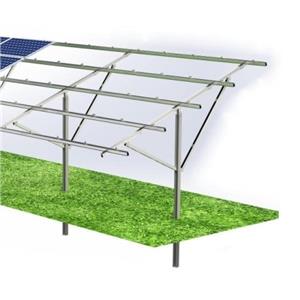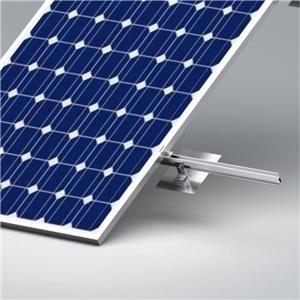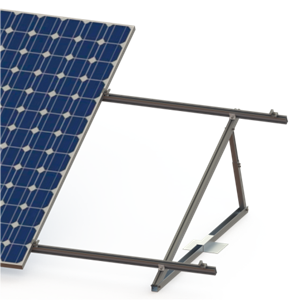Advantages and technical parameters of flat roof photovoltaic fixed bracket
Rooftop photovoltaic power generation systems generally use their own house roofs, factory roofs and licensed public sites as construction sites, especially for industrial and commercial photovoltaics to install modules on the roof, which can not only help owners save electricity costs, but also optimize the use of roof space. Cool down. In this article, we will share the advantages and some technical parameters of flat roof photovoltaic fixed brackets.
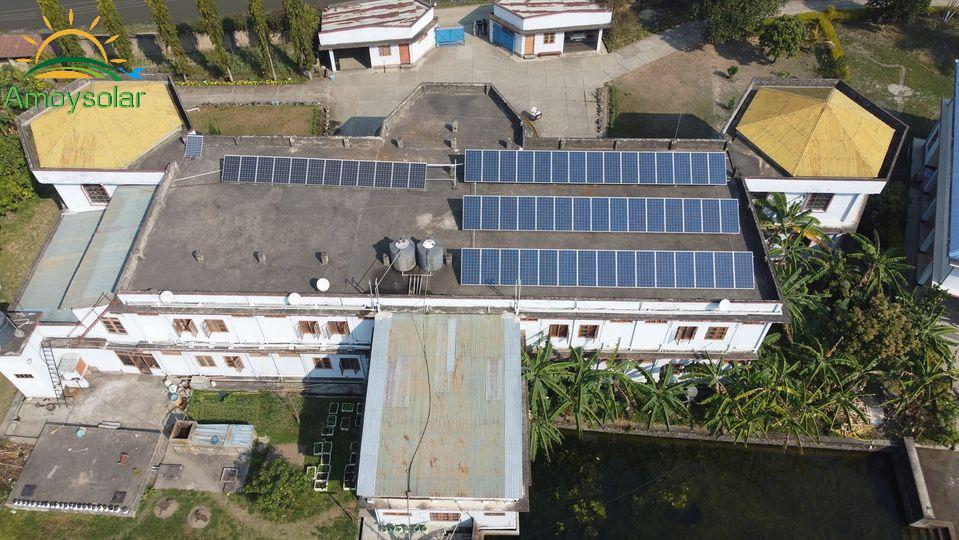
A brief introduction to roof types
At present, the roof types of photovoltaic power stations are generally divided into sloping roofs and flat roofs. Generally, sloping roofs, flat roofs and color steel tile roofs are more common. If it is a sloping roof, the common roof forms are: single-sided sloping roof, "ren" sloping roof, etc.; if it is a flat roof, the common flat roof form is : Concrete flat roof, color steel plate flat roof, steel structure flat roof, spherical joint roof, etc.
Second, the advantages of flat roof photovoltaic fixed bracket
1. A flat roof with a roof slope of less than 5% (2.86 degrees) is a flat roof. If it is idle, it can be fully utilized, but the drainage of the flat roof is slow, and the temperature rises significantly in summer. In addition to saving economy, installing a photovoltaic support system on a flat roof has another advantage of heat insulation and cooling. Installing a set of photovoltaic power stations can reduce the temperature by 5~7 degrees, and the effect is very obvious.
2. The flat roof adjustable photovoltaic support adopts a sliding pressure block structure, and there are four specifications, 10~15 degrees, 15~25 degrees, 25~40 degrees and 40~60 degrees. Adjust the sliding block according to the latitude to adjust the angle to ensure the power generation efficiency. Specially customized aluminum guide rails can be applied to various specifications of battery panels, and the overall structure is stable and has good applicability.
3. The unique matrix design makes the whole system more stable. With the wind deflector, the ballast weight requirement can be greatly reduced. It can be flexibly installed with the cement foundation or ballast board effectively, which solves the problem of low load bearing on the roof. The high-density structural design makes on-site installation faster, can be used for different flat roof project installations, and has strong battery panel compatibility.
Different products can meet different user needs, please click the link for details: Flat roof solar mouting system
3. Technical parameters of flat roof photovoltaic support
| Installation site | Flat roof, ground | Applicable panel type | Framed / Frameless |
| Installation foundation | Cement foundation, Steel foundation | Panel layout | Horizontal / Vertical |
| Installation angle | 0-60° | Bracket material | AL6005-T5 (surface anodized) |
| Wind load | 60 m/s | Fastener material | Zinc nickel alloy & stainless steel SUS304 |
| Snow load | 1.6 KN/㎡ | Service life | Design service life is 25 years, quality assurance is 10 years |
| Design Standard | AS/NZS 1170, DIN 1055, JIS C8955: 2017; International Building Code: IBC 2009; California Building Code: CBC 2010 | ||
Fourth, the installation method of flat roof photovoltaic fixed bracket
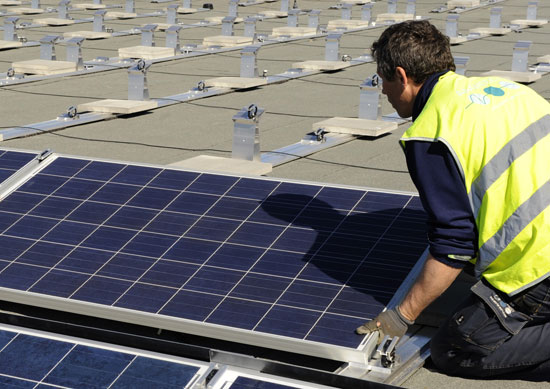
For flat roofs, the installation method of photovoltaic power station mainly adopts the form of cement pier + photovoltaic bracket. In order to ensure the power generation, the optimal inclination angle should be determined according to the geographical location of different regions and combined with the actual situation. In order to ensure that the front row components do not block the rear row components, leave space between the two rows of components. In addition, the waterproof layer of the photovoltaic system of the flat roof is very important. It is necessary to use waterproof membranes, cement mortar protective layers, ceramic tiles, etc. to do waterproof work.
If it is a color steel tile, it is necessary to provide targeted fixtures and fixing solutions according to the different tile types, and use different types of bracket guide rails according to the arrangement of components, so as to ensure the strength of the photovoltaic bracket and have a strong cost performance. Its main function is to clamp the protruding part of the color steel plate and support the aluminum guide rail installed on the roof. This type of fixture can achieve the effect of firmly locking the color steel plate and aluminum guide rail, durable and beautiful, easy to combine, and quick to install.
The above is the relevant introduction of the flat roof photovoltaic support system. Industry and commerce will choose to build rooftop power stations because of the large roof area, flat roof, large electricity consumption, high electricity price, large installed capacity and large power generation. Especially for high-energy-consuming production enterprises, the installation of photovoltaic power stations can save a lot of electricity expenses. For the production enterprises that compete for every cent, the yield of photovoltaic power generation is much higher than that of many traditional production enterprises, which is very worth investing in.

